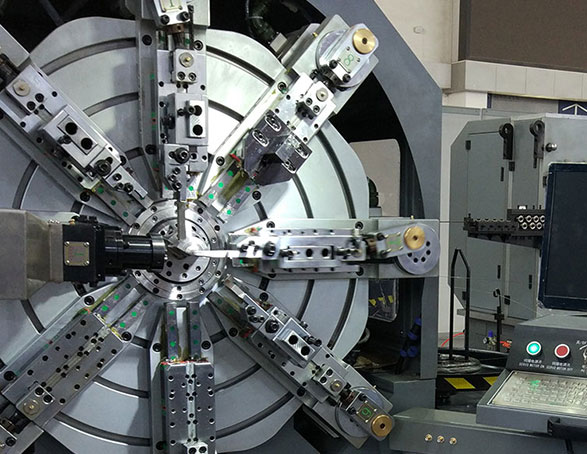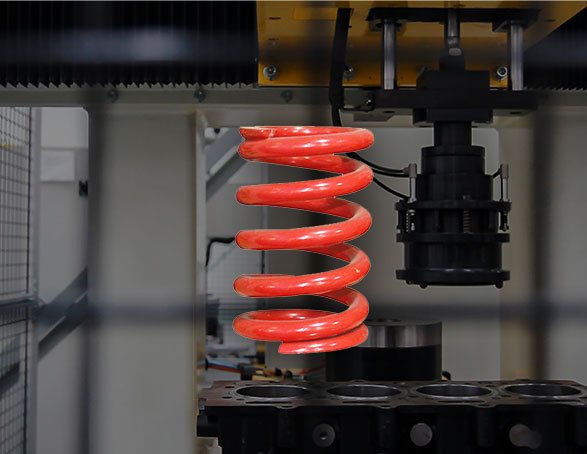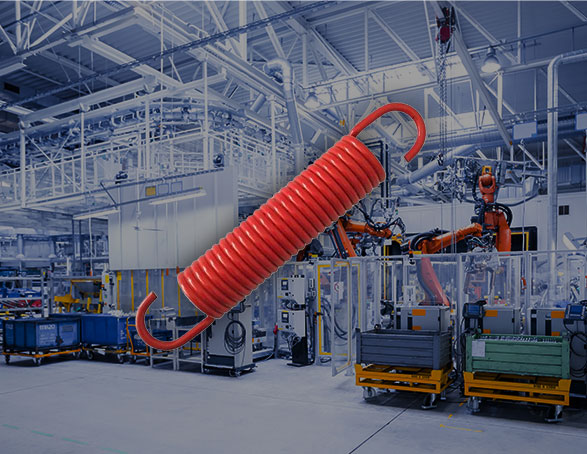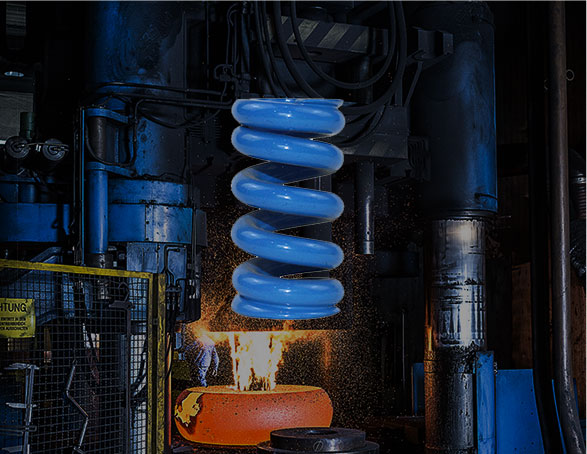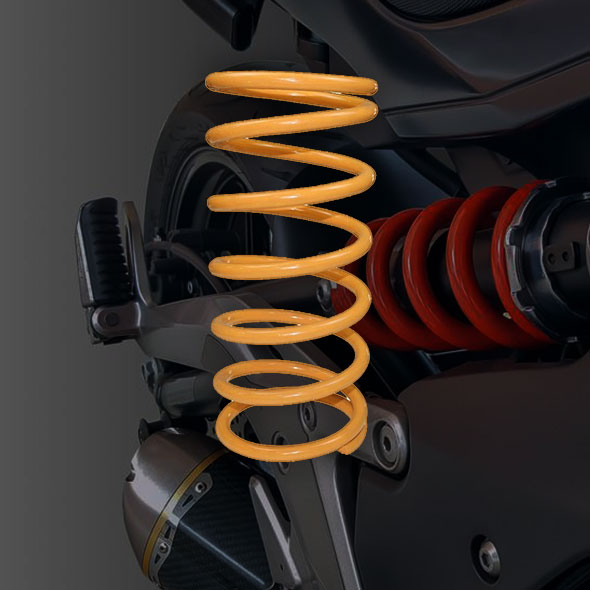Zhejiang Jinchang spring Co., Ltd.
Blackening treatment process of disc spring
- Categories:Company news
- Author:
- Origin:
- Time of issue:2020-04-24 15:45
- Views:
(Summary description)When the spring is in the heated solution, the surface of the spring is corroded by alkali, Produce iron ions (ferrous compounds). Adding oxidant sodium nitrite to the alkali can change the oxidation process and form a dense oxide film (ferric oxide) on the spring surface. This oxide film is mainly composed of magnetic iron oxide, and the formation time of the oxide film is 30 ~ 60 minutes. If the time is prolonged, the thickness of the oxide film cannot be improved.
Blackening treatment process of disc spring
(Summary description)When the spring is in the heated solution, the surface of the spring is corroded by alkali, Produce iron ions (ferrous compounds). Adding oxidant sodium nitrite to the alkali can change the oxidation process and form a dense oxide film (ferric oxide) on the spring surface. This oxide film is mainly composed of magnetic iron oxide, and the formation time of the oxide film is 30 ~ 60 minutes. If the time is prolonged, the thickness of the oxide film cannot be improved.
- Categories:Company news
- Author:
- Origin:
- Time of issue:2020-04-24 15:45
- Views:
Spring blackening process
Alkaline chemical oxidation blackening is to heat the processed qualified spring into a solution containing concentrated alkali, so that a thin and dense oxide film can be obtained on the spring surface, which has anti-corrosion effect.
When the spring is in the heated solution, the surface of the spring is corroded by alkali, Produce iron ions (ferrous compounds). Adding oxidant sodium nitrite to the alkali can change the oxidation process and form a dense oxide film (ferric oxide) on the spring surface. This oxide film is mainly composed of magnetic iron oxide, and the formation time of the oxide film is 30 ~ 60 minutes. If the time is prolonged, the thickness of the oxide film cannot be improved.
1. Process:
Degreasing - (copper removal) - Pickling - Cleaning - oxidation (or secondary oxidation) - Cleaning - hot water cleaning - saponification - oil change of water immersion membrane device - warehousing.
2. Requirements for each process
(1) Degreasing
1. Chemically degrease naoh100 ~ 150g / L + na2co320-27g / L, heat to the boiling point, and add a small amount of waste acid and iron into the barrel
2. Wash the oil with gasoline or diesel.
3. Remove oil and rust by sand blasting or shot blasting
4. The quenched and tempered spring can be degreased and rusted by rolling barrel
(2) Copper removal
This process can be omitted when using 250 ~ 300g / L chromic acid + 80 ~ 100g / L ammonium sulfate without copper
Soak in water for 1 ~ 2 minutes, and then wash in clean water
(3) Pickling
Soak in 30% industrial hydrochloric acid for 1 ~ 2 minutes to remove oil and rust, and the pickling time shall not be too long
(4) After cleaning, neutralize in weak alkali tank to prevent acid from being brought into oxidation tank
(5) Oxidation
Sodium hydroxide 650 ~ 700g / L + sodium nitrite 100 ~ 150g / L, heated to 140 ~ 144 ℃, kept for 30 ~ 60 minutes, NaOH: NaNO2 = 5 ~ 8:1
(6) After cleaning and oxidation, rinse in flowing clean water
(7) Wash with hot water at 90 ~ 100 ℃ for 1 ~ 2 minutes
(8) Saponification
Heat 10 ~ 20% industrial soap or triethyloleic acid soap at 50 ~ 60 ℃ for 1 ~ 2 minutes, and the temperature shall not be too high
(9) Apply oil and dip MS-1 water film to replace antirust oil
(10) Warehousing
Blackening process operation specification
(1) turn on the power supply after work every day to heat the tank liquid to the boiling point and remove the iron oxide (sediment) in the tank;
(2) after removing the sediment, add about 0.5kg yellow blood salt (potassium ferrocyanide)
(3) add a certain amount of sodium nitrite (5 ~ 8:1) according to the technical requirements of blackening process;
(4) use a thermometer to measure the humidity of blackened tank liquid to ensure that the tank liquid temperature is 140 ~ 144 ℃. If the temperature is too high, add water and control the heating power supply;
(5) before blackening, the spring must be fully pickled and cleaned, and the tension spring must be vertically framed for easy cleaning;
(6) in case of blackening, the process and technical requirements must be strictly implemented, the oil residue on the liquid level shall be removed in time, and the tank liquid shall be supplemented in time;
(7) after blackening, the spring shall be sprayed and washed with high-pressure water, washed with boiling water, and the saponification temperature shall be controlled at 50 ~ 60 ℃;
(8) the spring shall be framed and put into storage after excessive oil is drained. The iron frame with the spring removed shall be sprayed and washed with high-pressure water before reuse;
(9) when off duty, add a certain amount of sodium hydroxide (conforming to 5 ~ 8:1) into the oxidation tank, turn off the power, clean and clean the work site and keep the site clean.
More information
Quick links
Contact
Online Message
Domestic mailbox:jinchang@zjspring.com
International mailbox:export@zjspring.com
Address: No. 8, Wangyun West Road, Zhuji City, Zhejiang Province
Copyright: Zhejiang Jinchang spring Co., Ltd. 浙ICP备17002341号-1 Powered by 300.cn




